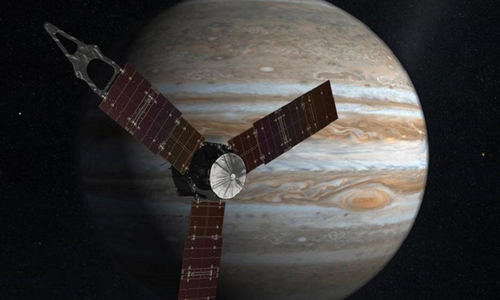
The space probe “Juno” near Jupiter
4 July 2016
After five years of traveling, “Juno” mission of American Space Agency (NASA), worth about a billion dollars, today reaches Jupiter, which will be closer to a distance of 5,000 kilometers.
It will give scientists a new insight into the largest planet of the solar system.
The Juno spacecraft weighing over 3,600 kilograms and of the size of a basketball court, was named after Juno, which, in Roman mythology, was the name of the wife of the Roman God Jupiter.

Juno, solar-powered spacecraft, was launched in August 2011 from Cape Canaveral in Florida, and after its arrival in the immediate vicinity of Jupiter, it will be engaged in two-year study of the atmosphere and magnetosphere of Jupiter and its moons.
67 natural satellites are deployed around Jupiter, among which are the most famous ones, such as Europe, Io, Ganymede and Callisto. Likewise, this planet is enveloped by the strongest magnetic field that exists in the solar system.
“Jupiter is the planet literally on steroids; everything about it is extreme,” said Scott Bolton, the principal investigator of the Juno mission.
Juno is expected to enter the orbit of Jupiter, with a few complex manoeuvres, which will orbit it 37 times. Due to radiation, all electronics in the space probe will be destroyed, except for the titanium vault with the computer which will record the data.
The scientists of NASA most hope to solve the mysteries of the Great Red Spot, the largest cyclonic storm, three times bigger than Earth, and it has been raging for over 300 years.








